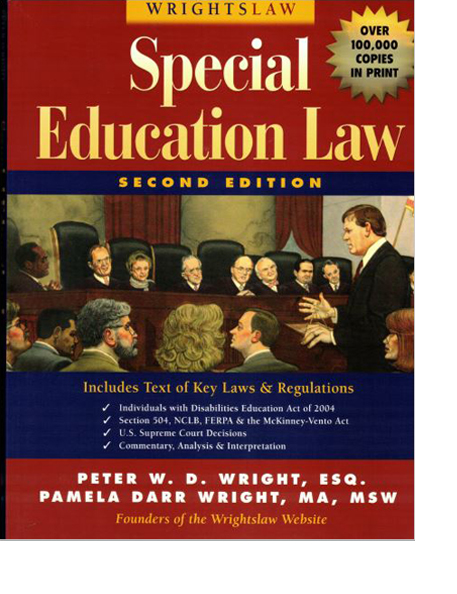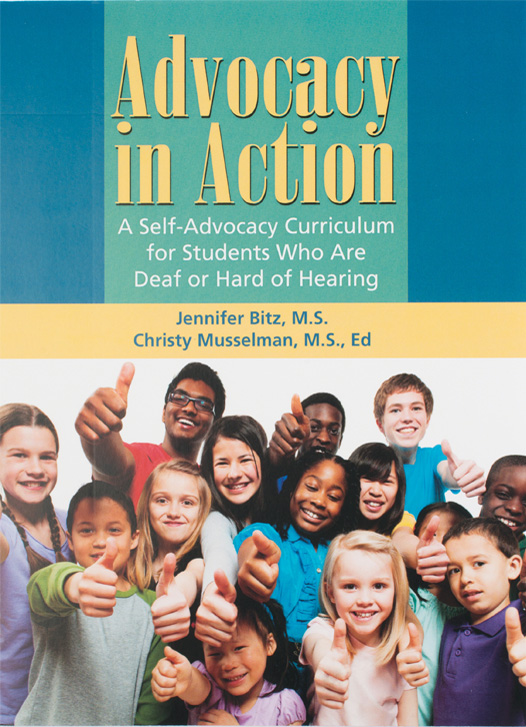Related Products
For Professionals
- Amplification
- Assessment of Student Skills, Challenges, Needs
- Early Childhood: Infants, Toddlers, Preschool
- Hearing Loss – Identification, Impact and Next Steps
- IDEA Law Summary Information
- Language and Speech Development Issues
- Legal Issues in Serving Children with Hearing Loss
- Listening (Auditory Skills) Development
- Planning to Meet Student Needs
- Self-Advocacy Skills for Students with Hearing Loss
- Self-Concept: How the Child with Hearing Loss Sees Himself
- Social Skills
- Speech Perception & Learning
Related Teacher Tools Takeout Items
Equal Access Includes Appropriate Accommodations During Testing
 Schools and teachers have recently been held accountable for the progress made by each and every student. Many state departments of education and districts have defined the accommodations that can be provided to students with special needs so that fair access, but no unfair advantage is provided.
Schools and teachers have recently been held accountable for the progress made by each and every student. Many state departments of education and districts have defined the accommodations that can be provided to students with special needs so that fair access, but no unfair advantage is provided.
With only 1:100 IEPs for students eligible for specialized instruction due to hearing loss, the access issues secondary to being deaf or hard of hearing are often unrecognized or minimized. The unique needs of students with hearing loss may not be thoroughly recognized in the administrative testing policies, requiring us to advocate so that students who are DHH are tested fairly for their knowledge, and not their inability to fully perceive the test items.
Test accommodations are changes made in the test presentation or response method so that students can demonstrate what they know about the content without changing the content of what is intended to be measured. Valid accommodations produce scores for students with disabilities that measure the same attributes as standard assessments measured in non-disabled students.
The purpose of accommodations is to ‘level the playing field’, thereby improving access to the material presented in instruction and to ensure accurate assessment of student knowledge of the test material. Many students use accommodations that are commonly used by other students with special needs, such as extended time, and also use accommodations that fit the unique communication and learning needs of this population. Standardized, high-stakes testing presumes a certain level of English proficiency that is not necessarily appropriate for students who are deaf or hard of hearing. High-stakes tests have a highly verbal aspect, therefore, students with restricted language skills are at a distinct disadvantage. When expressive and receptive language levels and modalities used by students with hearing loss are considered, and how these may differ significantly from those of English-based hearing students, the need for accommodations becomes even more apparent. Reading is auditorilly based and learning to read at the same rate and to the same level of peers is often challenging. Students who are deaf/hard of hearing may be one or more years delayed in reading as compared to their typically hearing classmates. Often, decisions about what accommodations are necessary are made by IEP team members without an adequate understanding of, or training in, the impact of hearing loss on interaction and performance.
Access to instruction is much more than identifying if your students can hear/see what the teacher is presenting. The instructional language level used by teachers is often 1.5 grades above the student grade level, making it especially difficult for students with hearing loss who have a 6 month or more delay to fully comprehend what the teacher is saying. Access to instruction also includes thinking about the language used in the environmental print in the classroom, use of figurative language, and the language level used in textbooks. The language that the student must understand to be able to complete assignments is also a factor.
Questions to answer about student access during test taking when planning for appropriate accommodations:
1. Is the student able to access the test materials as effectively as peers without hearing loss?
2. Is the student able to demonstrate content knowledge via a variety of test formats?
3. Is the student able to respond accurately to a variety of test questions (wh-questions, compare/contrast, summarize, etc.)?
4. Can the student organize thoughts and use appropriate grammar, spelling and mechanics to clearly communicate ideas via essay-type questions?
5. Does the student budget time to allow completion of all test items?
In response to issues identified when answering the questions above, IEP teams should determine changes necessary to ‘level the playing field’ for each student who is deaf or hard of hearing.
Timing/Scheduling Changes to when the assessment is given
Setting Changes to where the assessment is given
Administration Changes to how the assessment is given
Presentation Format Changes to how the assessment is given
Response Format Changes to how a student responds to the assessment
Other Use of dictionaries/word lists/glossaries
Assessment accommodations uniquely relevant to students who are deaf or hard of hearing may include the following. Accommodations should be used in classroom instruction prior to testing to ensure that the construct measured is the content area rather than the student’s ability to use the accommodation.
 Repeating directions (including with or without a proficient ASL interpreter)
Repeating directions (including with or without a proficient ASL interpreter)- Simplifying directions (including with or without a proficient ASL interpreter)
- DVD with video or without video
- Amplified audio recordings/auditory presentations
- Video or streaming video of visual communication (i.e., ASL)
- Response in sign language with a scribe
- Augmentative, assistive, or adaptive technology
- Computer-based, or computer-assisted testing
Accommodations are not mutually exclusive; students may use only one accommodation, or they may use many, depending upon their unique educational context and preferences. Additional factors influence accommodation patterns and effects including the student’s age, written English proficiency, and accommodation quality (i.e., interpreter proficiency or appropriateness of hearing assistance technology). Take time to review the extensive handout from NICHCY on Assessment & Accommodation found on the Accommodations webpage under Planning to Meet Student Needs in the Professional Resources section. It provides information on the big picture, deciding which accommodations a student needs, types of accommodations and more. Accommodations for Students with Hearing Loss.
Increasingly, high stakes testing requires listening to content presented on a computer. What do you need to do to make this type of testing accessible to the student with hearing loss? The webpage Connecting Hearing Devices to Computers or iPads provides extensive suggestions for ways that a student can listen effectively through a computer or iPad, including through streaming or Bluetooth systems, headphones or the use of silhouettes. Be sure to look through this information to be sure that you have really addressed all your student’s computer access needs!
It is a tremendous challenge to make peer discussion fully accessible to students with hearing loss due to the distance, noise and multiple talker issues. No technology at this point handles access to peers well. Although there are pass around microphone available to use with FM systems, these options are often under-used by most teachers. Access to instruction, including peer discussion, still relies on the classroom teacher keeping in mind that special consideration is needed by the student with hearing loss.
The Access to Instruction Checklist in the Teacher Tools Materials Just for Members Library is useful for discussing the different aspects of instructional access with teachers, and results in a score that can be interpreted to mean the level of necessity for accommodations and adaptations. This checklist is also in Chapter 7 of Building Skills for Success in the Fast-Paced Classroom, which deals with Instructional Access throughout the chapter.
Resources
- Leppo, R., Cawthon, S.W, & M.P. Bond (2013). Including Deaf and Hard-of-Hearing Students with Co-occurring Disabilities in the Accommodations Discussion. Journal of Deaf Studies and Deaf Education, 19: 2, 189-202.
- Case, B.J. (2005). Accommodations to Improve Instruction and Assessment of Students Who are Deaf or Hard of Hearing. Pearson Policy Report.



